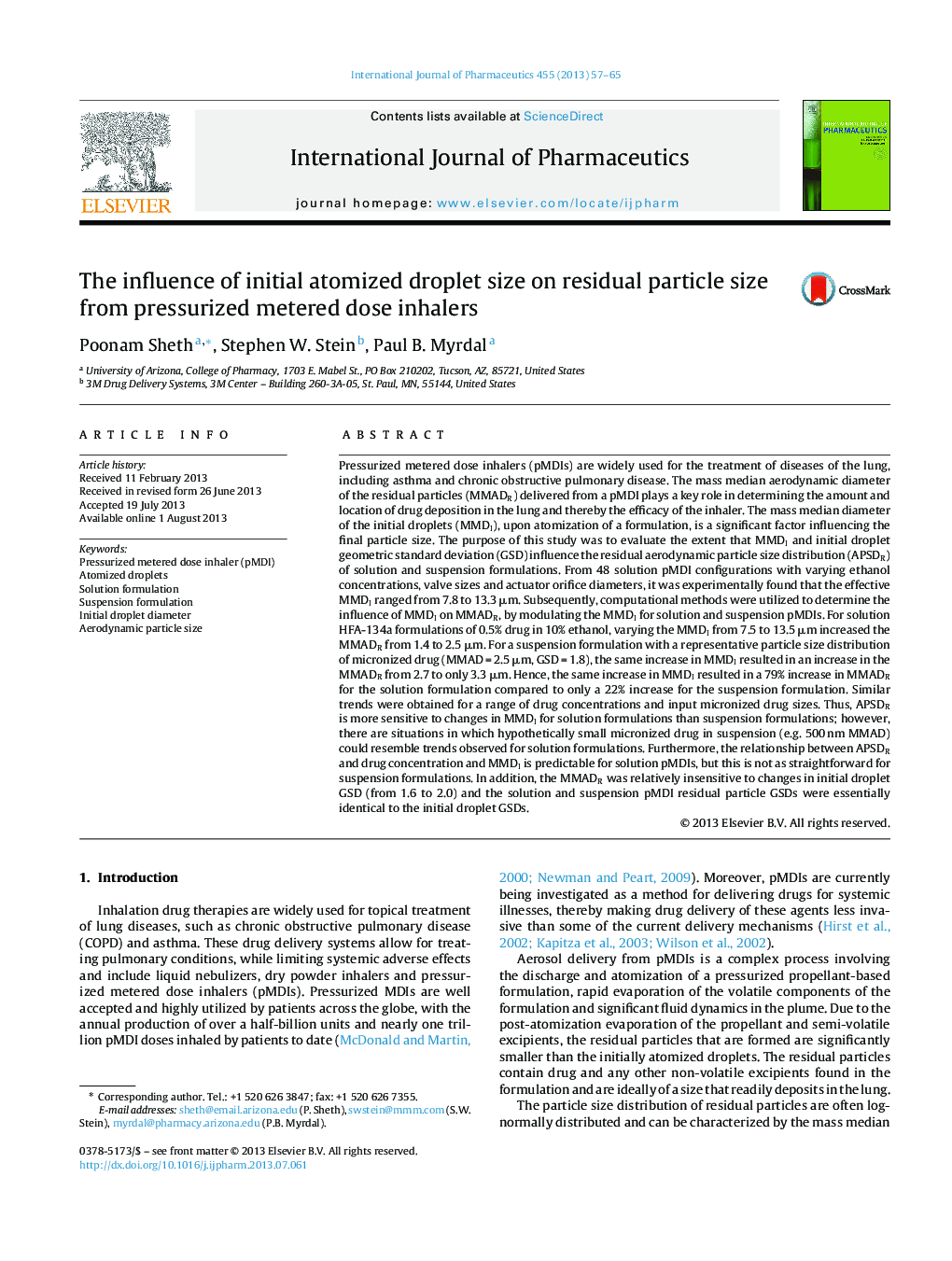| کد مقاله | کد نشریه | سال انتشار | مقاله انگلیسی | نسخه تمام متن |
|---|---|---|---|---|
| 2502086 | 1557376 | 2013 | 9 صفحه PDF | دانلود رایگان |

Pressurized metered dose inhalers (pMDIs) are widely used for the treatment of diseases of the lung, including asthma and chronic obstructive pulmonary disease. The mass median aerodynamic diameter of the residual particles (MMADR) delivered from a pMDI plays a key role in determining the amount and location of drug deposition in the lung and thereby the efficacy of the inhaler. The mass median diameter of the initial droplets (MMDI), upon atomization of a formulation, is a significant factor influencing the final particle size. The purpose of this study was to evaluate the extent that MMDI and initial droplet geometric standard deviation (GSD) influence the residual aerodynamic particle size distribution (APSDR) of solution and suspension formulations. From 48 solution pMDI configurations with varying ethanol concentrations, valve sizes and actuator orifice diameters, it was experimentally found that the effective MMDI ranged from 7.8 to 13.3 μm. Subsequently, computational methods were utilized to determine the influence of MMDI on MMADR, by modulating the MMDI for solution and suspension pMDIs. For solution HFA-134a formulations of 0.5% drug in 10% ethanol, varying the MMDI from 7.5 to 13.5 μm increased the MMADR from 1.4 to 2.5 μm. For a suspension formulation with a representative particle size distribution of micronized drug (MMAD = 2.5 μm, GSD = 1.8), the same increase in MMDI resulted in an increase in the MMADR from 2.7 to only 3.3 μm. Hence, the same increase in MMDI resulted in a 79% increase in MMADR for the solution formulation compared to only a 22% increase for the suspension formulation. Similar trends were obtained for a range of drug concentrations and input micronized drug sizes. Thus, APSDR is more sensitive to changes in MMDI for solution formulations than suspension formulations; however, there are situations in which hypothetically small micronized drug in suspension (e.g. 500 nm MMAD) could resemble trends observed for solution formulations. Furthermore, the relationship between APSDR and drug concentration and MMDI is predictable for solution pMDIs, but this is not as straightforward for suspension formulations. In addition, the MMADR was relatively insensitive to changes in initial droplet GSD (from 1.6 to 2.0) and the solution and suspension pMDI residual particle GSDs were essentially identical to the initial droplet GSDs.
Figure optionsDownload high-quality image (86 K)Download as PowerPoint slide
Journal: International Journal of Pharmaceutics - Volume 455, Issues 1–2, 15 October 2013, Pages 57–65